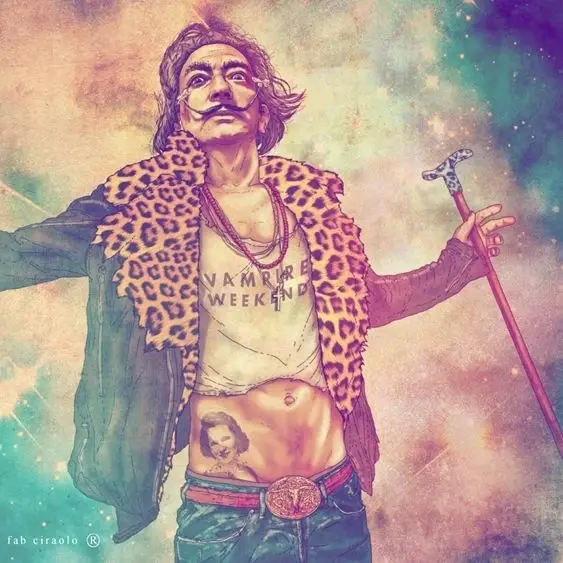If AI and deep fakes can listen to a video or audio of a person and then are able to successfully reproduce such person, what does this entail for trials?
It used to be that recording audio or video would give strong information which often would weigh more than witnesses, but soon enough perfect forgery could enter the courtroom just as it’s doing in social media (where you’re not sworn to tell the truth, though the consequences are real)
I know fake information is a problem everywhere, but I started wondering what will happen when it creeps in testimonies.
How will we defend ourselves, while still using real videos or audios as proof? Or are we just doomed?
As someone who works in the field of criminal law (in Europe, and I would be shocked if it wasn’t the same in the US) - I’m not actually very worried about this. By that I don’t mean to say it’s not a problem, though.
The risk of evidence being tampered with or outright falsified is something that already exists, and we know how to deal with it. What AI will do is lower the barrier for technical knowledge needed to do it, making the practice more common.
While it’s pretty easy for most AI images to be spotted by anyone with some familiarity with them, they’re only going to get better and I don’t imagine it will take very long before they’re so good the average person can’t tell.
In my opinion this will be dealt with via two mechanisms:
-
Automated analysis of all digital evidence for signatures of AI as a standard practice. Whoever can be the first person to land contracts with police departments to provide bespoke software for quick forensic AI detection is going to make a lot of money.
-
A growth in demand for digital forensics experts who can provide evidence on whether something is AI generated. I wouldn’t expect them to be consulted on all cases with digital evidence, but for it to become standard practice where the defence raises a challenge about a specific piece of evidence during trial.
Other than that, I don’t think the current state of affairs when it comes to doctored evidence will particularly change. As I say, it’s not a new phenomenon, so countries already have the legal and procedural framework in place to deal with it. It just needs to be adjusted where needed to accommodate AI.
What concerns me much more than the issue you raise is the emergence of activities which are uniquely AI dependent and need legislating for. For example, how does AI generated porn of real people fit into existing legislation on sex offences? Should it be an offence? Should it be treated differently to drawing porn of someone by hand? Would this include manually created digital images without the use of AI? If it’s not decided to be illegal generally, what about when it depicts a child? Is it the generation of the image that should be regulated, or the distribution? That’s just one example. What about AI enabled fraud? That’s a whole can of worms in itself, legally speaking. These are questions that in my opinion are beyond the remit of the courts and will require direction from central governments and fresh, tailor made legislation to deal with.
-
I think other answers here are more essential - chain of custody, corroborating evidence, etc.
That said, Leica has released a camera that digitally signs its images, and other manufacturers are working on similar things. That will allow people to verify whether the image is original or has been edited. From what I understand Leica has some scheme where you can sign images when you update them too, so there’s a whole chain of documentation. Here’s a brief article
Cameras with stronger security will become more and more important, though on a theoretical level, they could be cracked or forged, but I suppose it’s the usual cat and mouse game
A camera that authenticates the timestamp and contents of an image is great. But it’s still limited. If I take that camera, mount it on a tripod, and take a perfect photograph of a poster of Van Gogh’s Starry Night, the resulting image will be yet another one of millions of similar copies, only with a digital signature proving that it was a newly created image today, in 2024.
Authenticating what the camera sensor sees is only part of the problem, when the camera can be shown fake stuff, too. Special effects have been around for decades, and practical effects are even older.
You’re right, cameras can be tricked. As Descartes pointed out there’s very little we can truly be sure of, besides that we ourselves exist. And I think deepfakes are going to be a pretty challenging development in being confident about lots of things.
I could imagine something like photographers with a news agency using cameras that generate cryptographically signed photos, to ward off claims that newsworthy events are fake. It would place a higher burden on naysayers, and it would also become a story in itself if it could be shown that a signed photo had been faked. It would become a cause for further investigation, it would threaten a news agency’s reputation.
Going further I think one way we might trust people we aren’t personally standing in front of would be a cryptographic circle of trust. I “sign” that I know and trust my close circle of friends and they all do the same. When someone posts something online, I could see “oh, this person is a second degree connection, that seems fairly likely to be true” vs “this is a really crazy story if true, but I have no second or third or fourth degree connections with them, needs further investigation.”
I’m not saying any of this will happen, just it’s potentially a way to deal with uncertainty from AI content.
Hardware signing stuff is not a real solution. It’s security through obscurity.
If someone has access to the hardware, they technically have access to the private key that the hardware uses to sign things.
A determined malicious actor could take that key and sign whatever they want to.
Science has proven that the entire model of human memory as factual testimony is a fallacy. That came out long before AI in the public space. I don’t think anyone has addressed that revelation. I doubt anyone will address this one. Hell, there are still people sketching the courtroom like cameras don’t exist. A president can stage a failed coup and a SC judge can fly the traitor’s flag and there are no consequences for either.
So what will be done, absolutely nothing, unless some billionaires stage a proxy war over it.
When video or audio evidence is submitted, it will be questioned as to its authenticity. Who recorded it? On what device? Then we’ll look for other corroborating evidence. Are there other videos that captured the events in the background of the evidence video? Are there witnesses? Is there contradictory evidence?
Say there’s a video depicting a person committing murder in an alley. The defense will look for video from the adjoining streets that show the presence or absence of the murderer before or after. If those videos show cars driving by with headlights on, they will look for corresponding changes in the luminosity of the crime video. If the crime happened in the daytime, they will check that the shadows correspond to Sun’s position at that moment. They’ll see if the reflections of objects match the scene. They’ll look for evidence that the murderer was not at the scene. Perhaps a neighbor’s surveillance camera shows they were at home or their cell phone indicated they were someplace else.
But if all these things indicate the suspect was in the alley and the video is legitimate, that’s powerful evidence toward a conviction.
Are there other videos that captured the events in the background of the evidence video?
I think this is key in a trial setting. A published picture might be unique but to think the photographer snapped just one picture while nobody else was present or also photographing is a bit of a stretch.
We’re not. Its going to upend our already laughably busted “justice” system to new unknown heights of cartoonish malfeasance.
Eventually, we will just have to accept that photographic proof is no longer proof.
There are ways that you could guarantee an image is valid. You would need a hardware security module inside the camera, which signs a hash of the picture with its own built-in security key that can’t be extracted and a serial number that it generates. That can prove that an image came from a particular camera, and if you change even one pixel of that image the signature won’t match anymore. I don’t see this happening anytime soon. Not mainstream at least. There are one or two camera manufacturers that offer this as a feature, but it’s not on things like surveillance cameras or cell phones nor will it be anytime soon.
True, sooner or later there might be ways to make sure that a picture or video are digitally signed and probably it would be very hard to crack, but theoretically a fake video might still pass for real (though it would require a lot of resources to make that happen)
More likely, most of the sources that produce photos and videos would not be using the digital signatures. Professional cameras for journalists probably would have the signature chip. Cheapo Chinese surveillance cameras? Unlikely.
Maybe each camera could have a unique private key that it could use to watermark keyframes with a hash of the frames themselves.
I think that’s exactly how it’s going to work - you can’t force all ‘fake’ sources to have signatures- it’s too easy to make one without one for malicious reasons. Instead you have to create trusted sources of real images. Much easier and more secure
It’s a scary question, made a lot less scary by whoever it was that said “you know, I guess we’ve had text deepfakes a long time”
Eventually people just know it could be fake, so they look for other ways of verifying. The inevitability and the scale of it mean that, at the very least, we’ll have all our brainpower on it eventually.
It’s the meantime where shit could get wild.
For the longest time now, from before AI, before NFT was a thing i had an idea to incorporating blockchain tech into real life media footage to combat the rise of misinformation.
The metadata, original author would be stored on this chain the moment footage is recorded. The biggest challenge is that this means the devices themselves need to be connected.
Adoption would be slow but i imagined news and official channels make use of this tech first. Eventually all footage outside of this will be seen as not trustworthy
Then NFTBros came along and people have shit on this idea ever since. Some days i feel that was a conspiracy to ruim out perception of potential but more likely humans where just greedy.
I still believe this could work. Detailed example below:
The system works with a fair amount of transparency, verifiable digital signatures for recording devices and their owners. Professional cameras and organizations would have publicly known IDs, while individuals could choose to remain pseudonymous authors but would need to build credibility over time.
Let’s say BBC records an interview. When viewers watch this content on any platform, they can access blockchain verification through an embedded interface (perhaps a small icon in the corner). This shows the complete chain of custody from recording to broadcast.
The system verifies content through computational comparisons. When a raw interview is edited into a final piece:
- Each original clip has a unique blockchain signature
- The final edited version’s signature can be compared against source material
- Automated analysis shows what percentage of original footage matches
- Modifications like color correction or audio adjustments are detected through signature differences
- Additional elements like station logos or intro sequences have their own verified identifiers
Disclaimer: I’m not an expert, just an interested amateur wanting to chat and drawing comparisons from past leaps in tech and other conversations/videos.
For a time expert analysis will probably work. For instance, the “click here to prove your not a robot” boxes can definitely be clicked by robots, but for now the robot moves in detectably different ways. My guess is that, for at least a while, AI content will be different from actual video in ways like code. There will probably be an arms race of sorts between AI and methods to detect AI.
Other forms of evidence like DNA, eyewitness accounts, cell phone tracking etc. will likely help mitigate deceitful AI somewhat. My guess is that soon video/audio will no longer be considered as ironclad as it was even a few years ago. Especially if it comes from an unverified source.
There are discussions about making AI tools have a digital “watermark” than can be used to identify AI-generated content. Of course this won’t help with black market-type programs, but it will keep most people out of the “deep fake for trials” game.
When it comes to misinformation on social media though, well…it’s probably going to get crazy. The last decade or so has been a race at an unprecedented scale to try and keep up with BS “proof”, psuedoscience, etc. Sadly those on the side of truth haven’t always won. The only answer I have for that is making sure people are educated about how to deal with misinformation and deepfakes - eg. awareness they exist, identifying reputable sources and expert consensus, and so on.
A camera can only show us what it sees. It doesn’t objectively necessitate a viewer’s interpretation of it. I remember some of us being called down to the principal’s office (before the age of footage-based scandals, which if anything imply shortcoming in the people progressing the rulings to be in so much awe at, sadly a common occurrence, adding to the “normal people distaste” I have, and something authorities have made sure I’m no stranger to) who may say “we saw you on the camera doing something against the rules” only to be responded to with “that’s not me, I have an alibi” or “that’s not me, I wouldn’t wear that jacket” or “that’s not me, I can’t do that person’s accent” (aforementioned serial slander of me serving as a prime example where this would be the case). In connection to the process, you might say it’s witness testimony from a machine and that they’ve “just started” to get into the habit of not being very honest to the humans in thw court.
I remember my first lie.I’m not a tech person, so I’ll take the lowest hanging fruit. The obvious answer is to write a program that can detect AI. Then there will be a competition between AI fakes and AI detection. This is similar to what we have in sports. There are forbidden enhancement procedures (e.g., steroids, blood doping, etc.) that have to keep improving in subtlety so not to be detected by Anti cheating measures.
That’s essentially how Generative adversarial networks work, and the effect is that the generative program gets better at making its fakes be undetectable
One step closer to requiring smart phones to track an individual for their alibi





